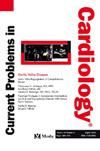Cardiovascular outcomes of patients with atrial fibrillation and concomitant cardiac amyloidosis undergoing percutaneous catheter ablation
IF 3
3区 医学
Q2 CARDIAC & CARDIOVASCULAR SYSTEMS
引用次数: 0
Abstract
Background
Atrial fibrillation has been linked with poor outcomes in patients with cardiac amyloidosis. We evaluate the in-hospital outcomes of patients with atrial fibrillation and concomitant cardiac amyloidosis with and without catheter ablation.
Methods
The National Inpatient Sample databases (2016 to 2021) were queried to identify patients admitted with atrial fibrillation and concomitant cardiac amyloidosis using ICD 10 codes. The study population aged >18 years was divided into two cohorts; ablation (AB) vs. no ablation (NAB). Multivariate logistic regression model adjusting for baseline characteristics and comorbidities. The primary outcome was all-cause in-hospital mortality. Secondary outcomes were acute heart failure, cardiogenic shock, ventricular fibrillation, major bleeding, stroke, length of stay, and hospitalization cost.
Results
73,160 patients were identified. 595(0.8 %) underwent ablation and 72,656 (99.2 %) did not. Both NAB and AB patients were predominantly white (69.6 % and 60.3 %) respectively. AB patients were younger with median age [74 years (IQR 66-80) vs. 78 years (IQR 71-84), p < 0.01], compared with NAB patients. AB patients were more likely to have heart failure (76.5 % vs. 65.3 %, p = 0.04), and have a family history of CAD (11.1 % vs. 4.8 %, p = 0.03). Contrarily, NAB patients were more likely to have dementia (11.5 % vs. 2.5 %, p = 0.01). After adjusting for baseline characteristics and comorbidity, there was no difference in all-cause mortality (OR 0.3, CI 0.08-1.35, p = 0.12), stroke (OR 1.1, CI 0.4-2.8, p = 0.87), or major bleeding (OR 1.4, CI 0.7-2.6, p = 0.37). Undergoing ablation was associated with higher odds of acute heart failure (OR 1.9, CI 1.1-3.3, p<0.01). After adjusting for inflation using the consumer price index, adjusted total cost of hospitalization was for higher AB patients was compared to NAB patients ($41,499.22 vs. $13,085.11) with a significantly longer length of stay among AB patients (7 days vs. 5days, p < 0.01).
Conclusion
Atrial fibrillation and concomitant cardiac amyloidosis in patients undergoing catheter ablation are associated with an increased risk of acute heart failure, higher cost, and a longer length of stay.

经皮导管消融房颤合并心脏淀粉样变性患者的心血管预后。
背景:心房颤动与心脏淀粉样变性患者预后不良有关。我们评估心房颤动和合并心脏淀粉样变性患者的住院结果,有和没有导管消融。方法:查询2016 - 2021年全国住院患者样本数据库,使用ICD 10编码识别心房颤动合并心脏淀粉样变性患者。年龄在18岁至18岁之间的研究人群分为两组;消融(AB)与无消融(NAB)。调整基线特征和合并症的多变量logistic回归模型。主要结局为全因住院死亡率。次要结局为大出血、卒中住院时间和住院费用。结果:共发现73,160例患者。595例(0.8%)行消融术,72656例(99.2%)未行消融术。NAB和AB患者均以白人为主(分别为69.6%和60.3%)。AB患者更年轻,中位年龄为74岁(IQR 66-80) vs. 78岁(IQR 71-84)。结论:导管消融患者心房颤动和合并心脏淀粉样变性与急性心力衰竭风险增加、费用增加和住院时间延长相关。
本文章由计算机程序翻译,如有差异,请以英文原文为准。
求助全文
约1分钟内获得全文
求助全文
来源期刊

Current Problems in Cardiology
医学-心血管系统
CiteScore
4.80
自引率
2.40%
发文量
392
审稿时长
6 days
期刊介绍:
Under the editorial leadership of noted cardiologist Dr. Hector O. Ventura, Current Problems in Cardiology provides focused, comprehensive coverage of important clinical topics in cardiology. Each monthly issues, addresses a selected clinical problem or condition, including pathophysiology, invasive and noninvasive diagnosis, drug therapy, surgical management, and rehabilitation; or explores the clinical applications of a diagnostic modality or a particular category of drugs. Critical commentary from the distinguished editorial board accompanies each monograph, providing readers with additional insights. An extensive bibliography in each issue saves hours of library research.
 求助内容:
求助内容: 应助结果提醒方式:
应助结果提醒方式:


